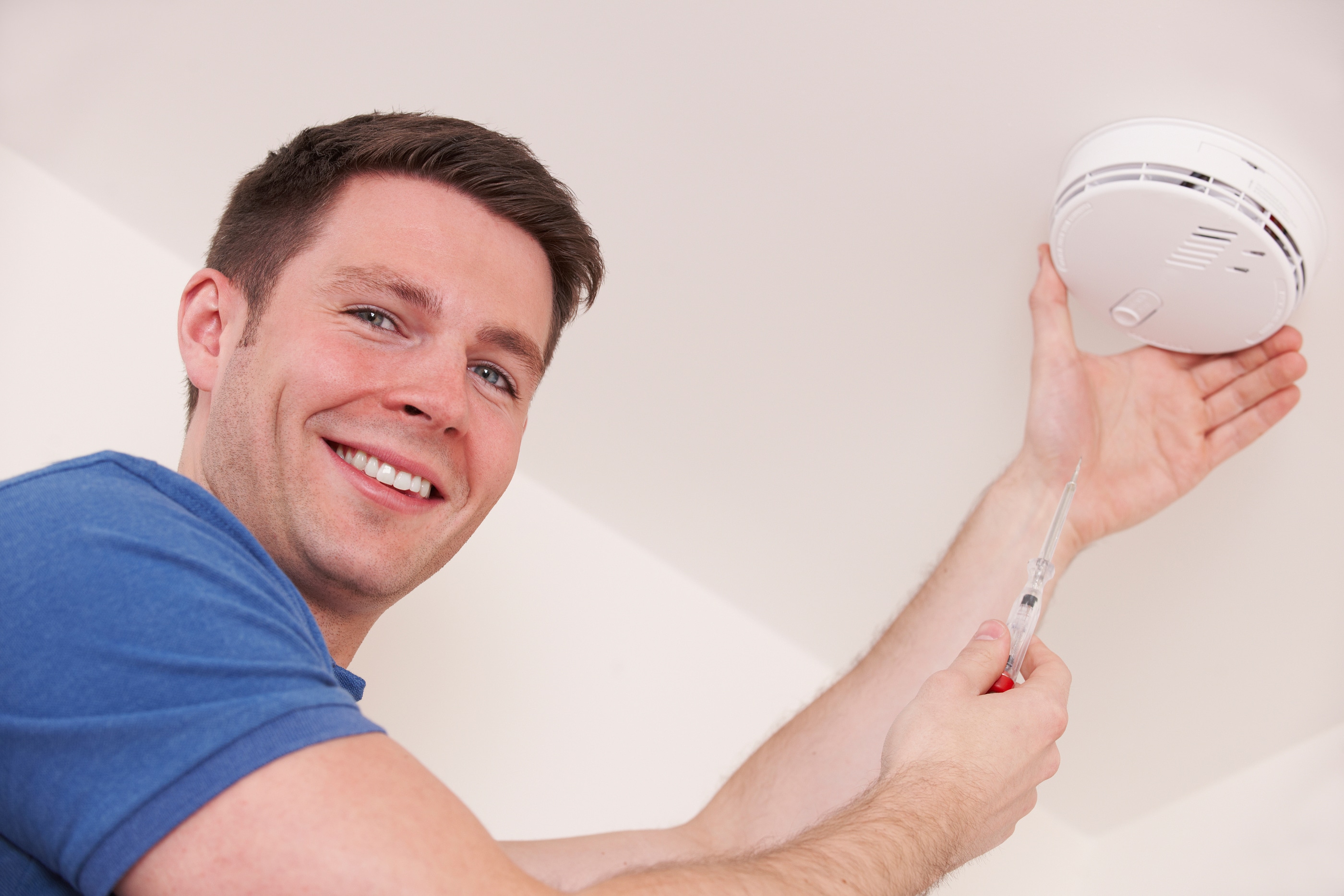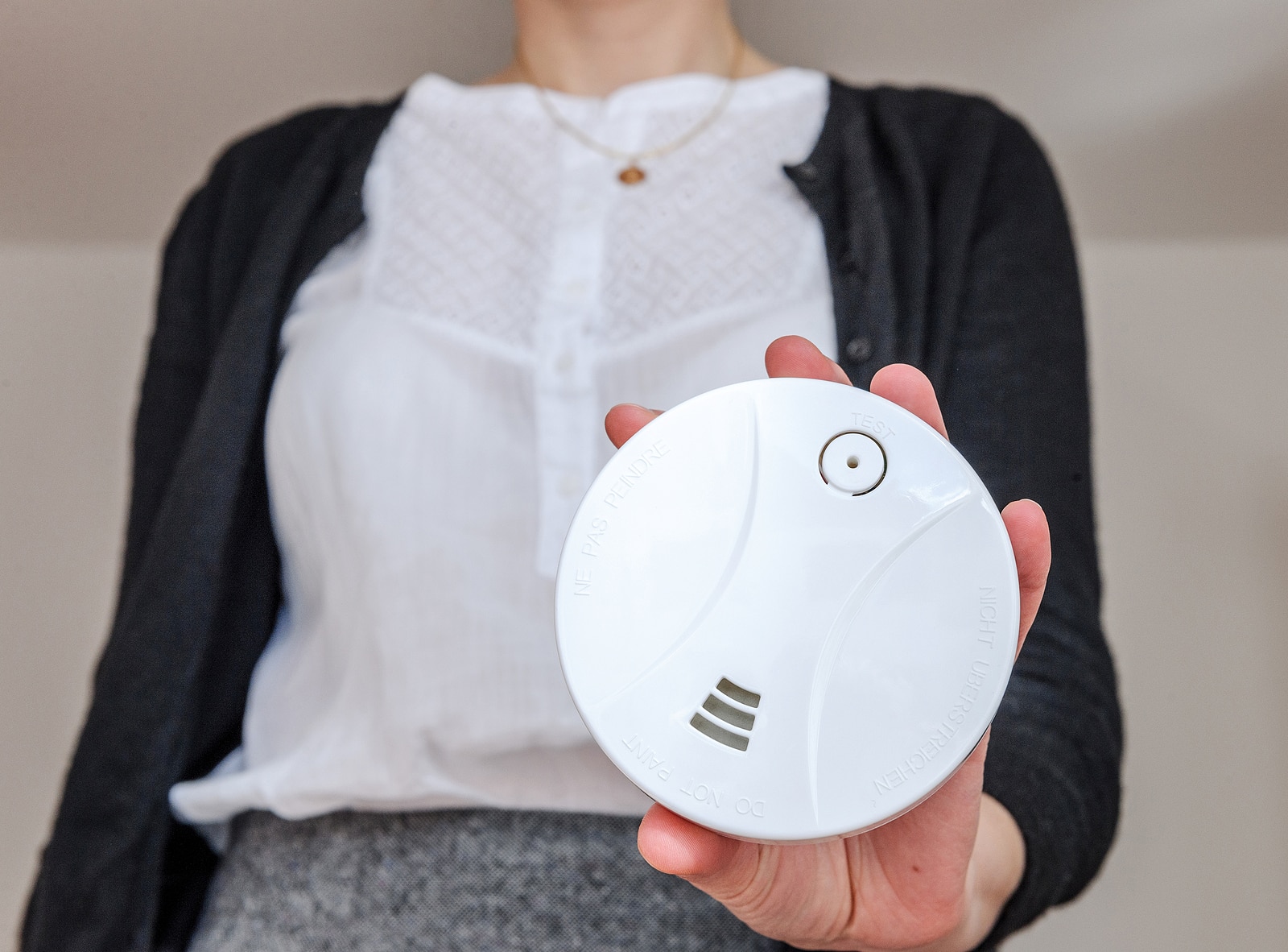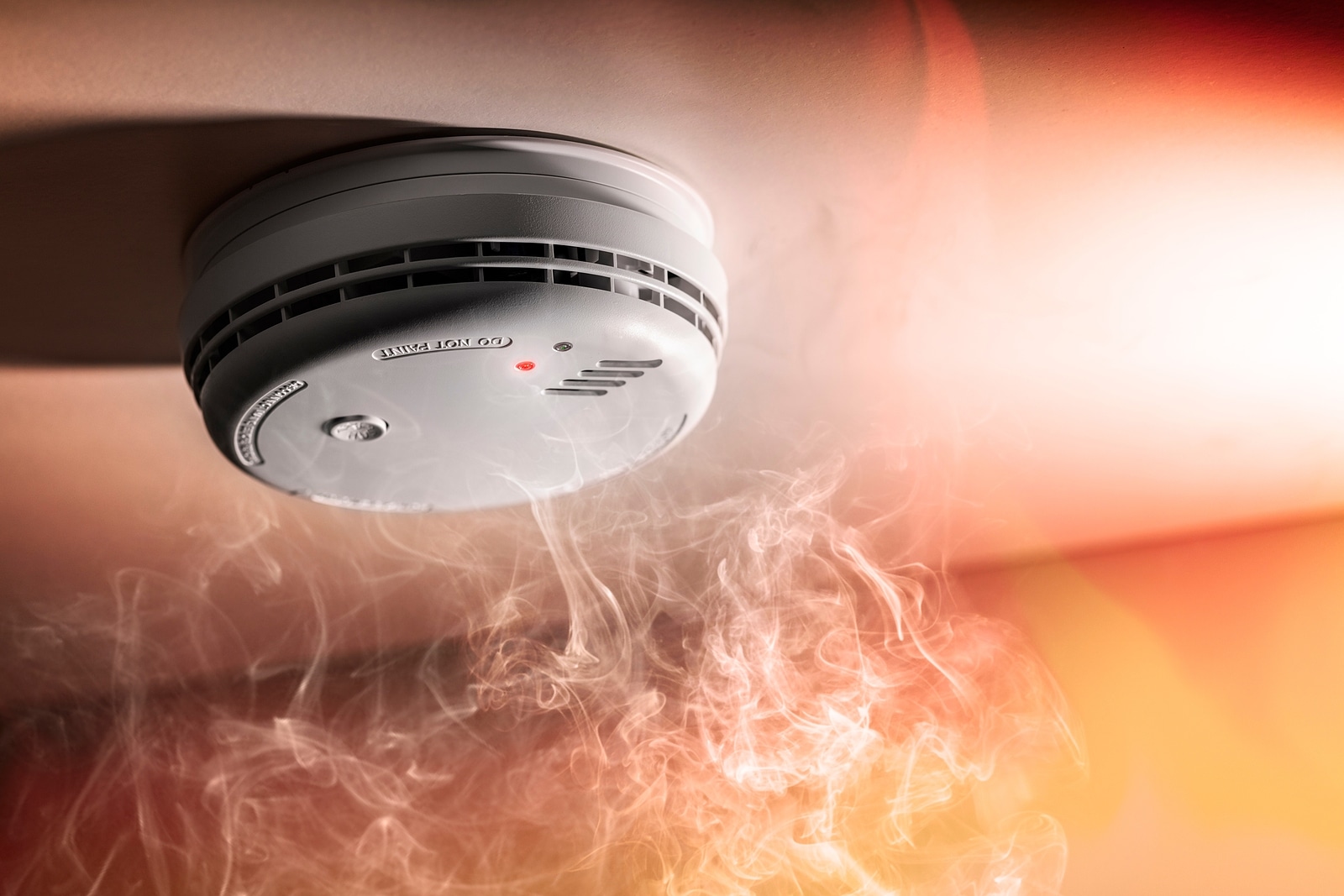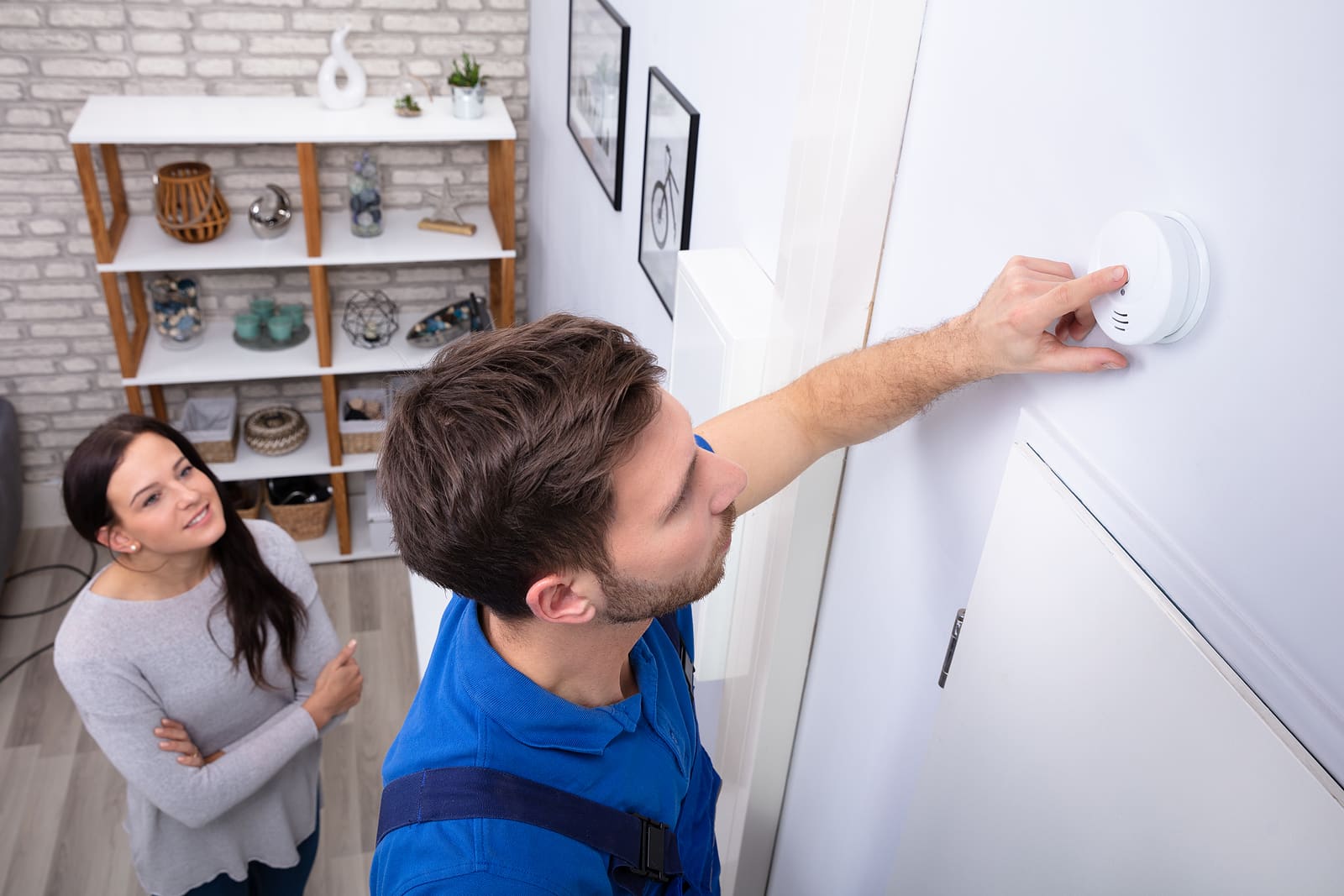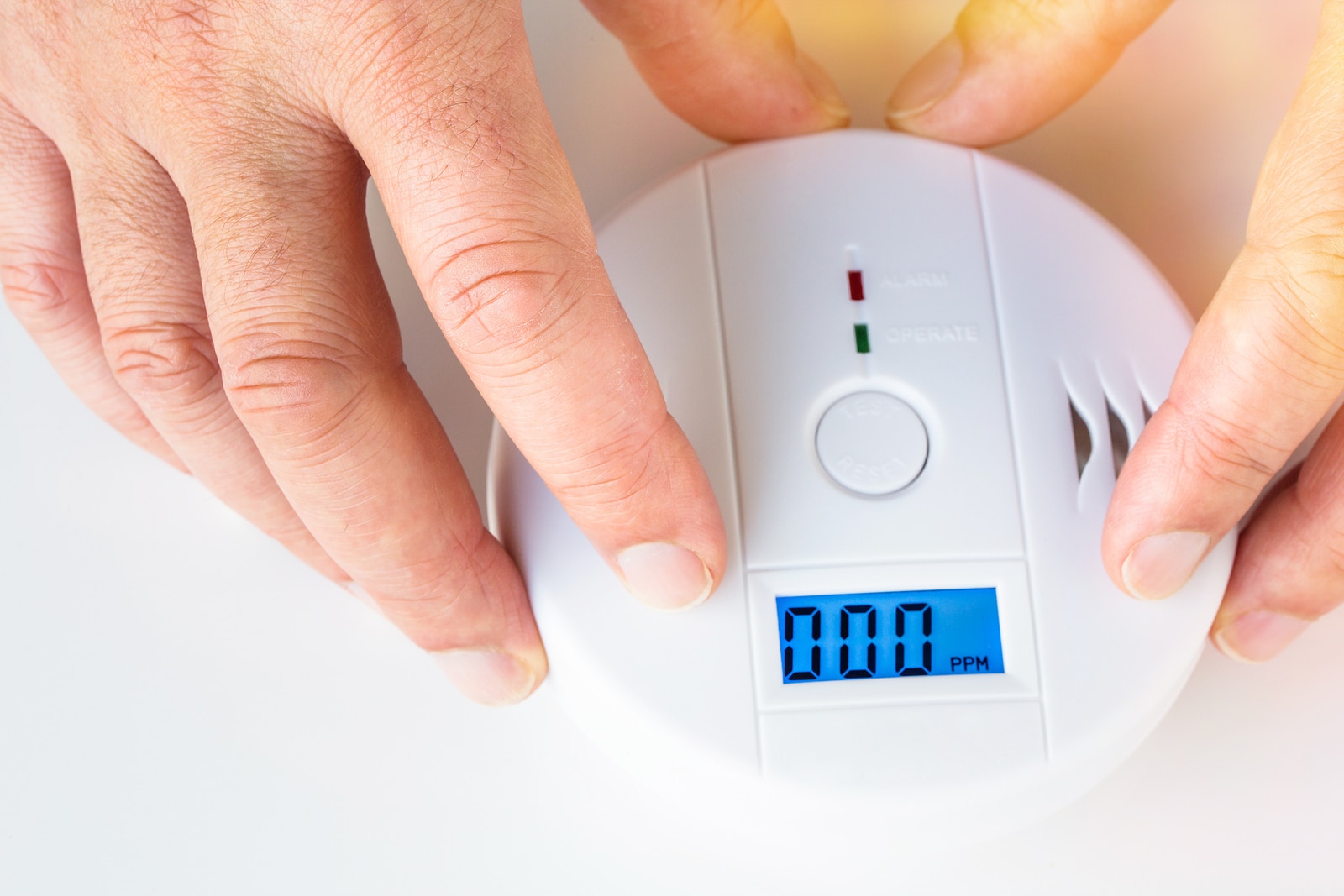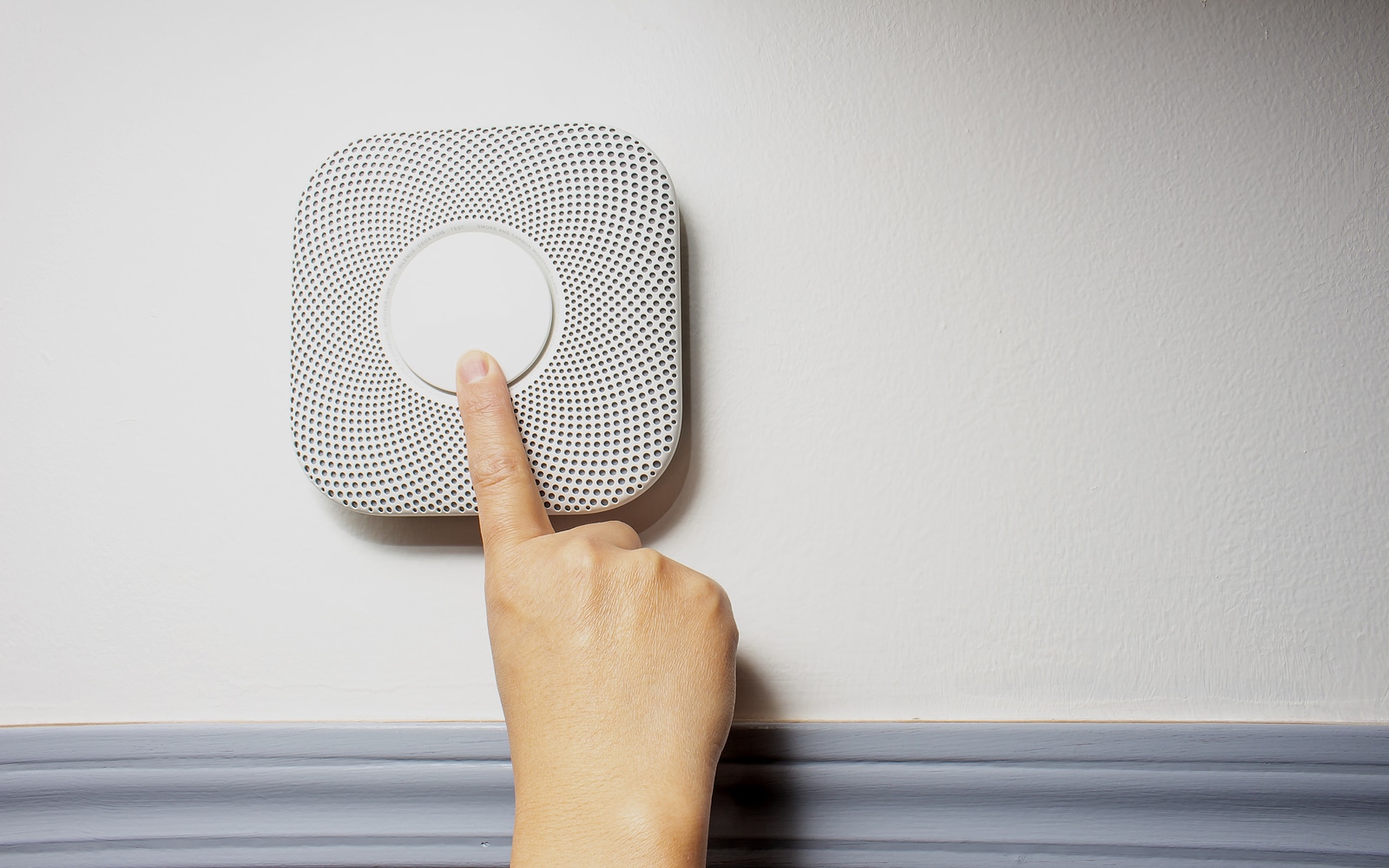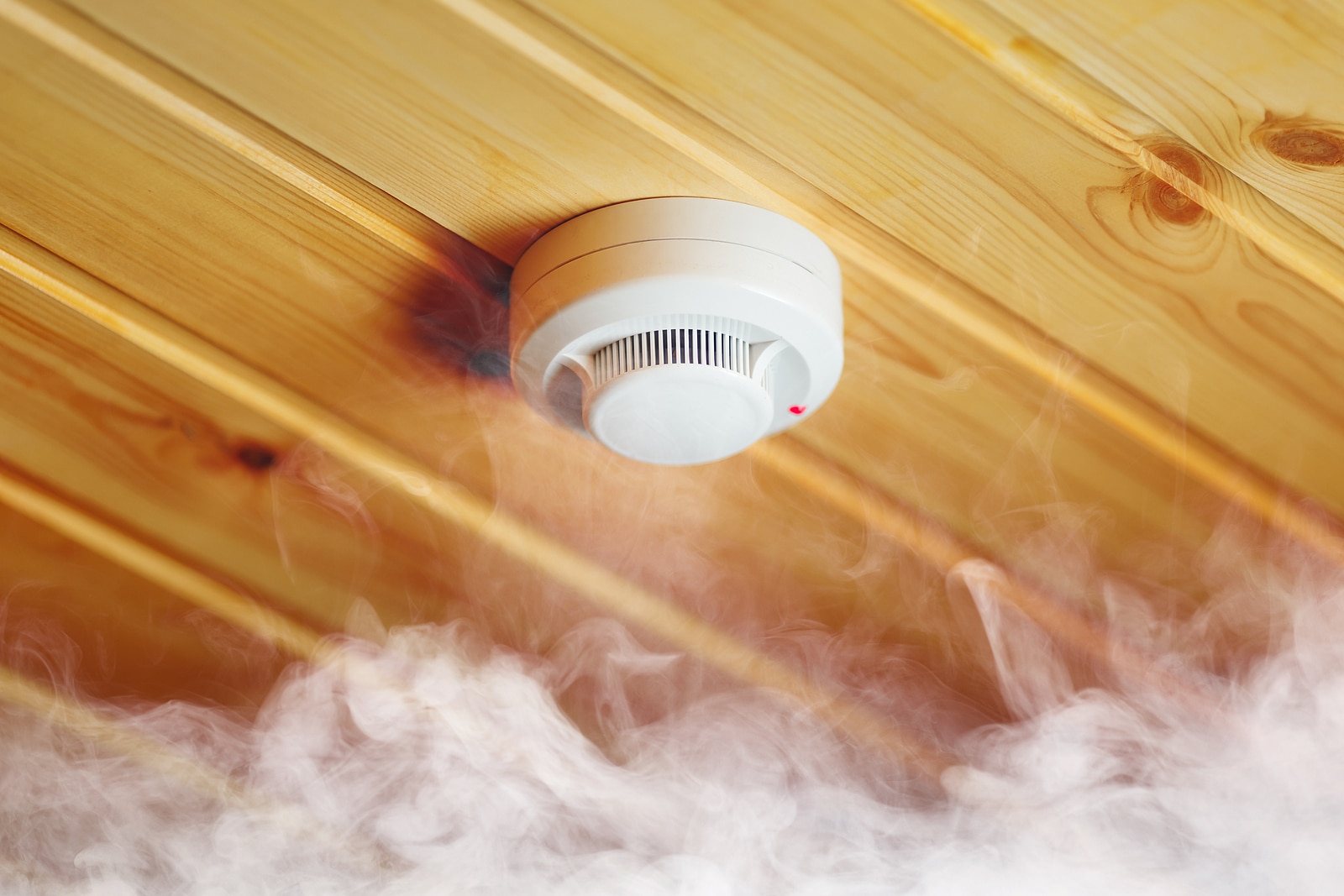Smoke and carbon monoxide detectors are essential safety devices designed to provide early warnings of potential hazards, such as fires and the presence of poisonous gases. These devices are crucial for ensuring the safety and well-being of individuals in residential and commercial settings. By detecting the presence of smoke or high levels of carbon monoxide, these detectors play a critical role in alerting occupants to potential dangers, allowing them to take necessary precautions and evacuate if needed.
In residential settings, smoke detectors are typically installed in key areas such as bedrooms, living rooms, and hallways, providing comprehensive coverage throughout the home. Carbon monoxide detectors are commonly placed near sleeping areas and in proximity to fuel-burning appliances, as carbon monoxide is a colorless, odorless gas that can be produced by malfunctioning or improperly vented fuel-burning appliances such as furnaces, stoves, and water heaters. In commercial environments, smoke and carbon monoxide detectors are essential for safeguarding the well-being of employees, customers, and valuable assets.
The importance of reliable smoke and carbon monoxide detection cannot be overstated, as these hazards pose significant risks to health and safety. In the event of a fire, early detection provided by smoke detectors can make a crucial difference in facilitating timely evacuation and minimizing property damage. Similarly, carbon monoxide detectors offer vital protection against the dangers of carbon monoxide poisoning, which can lead to symptoms such as headache, dizziness, nausea, and even death when exposure occurs in high concentrations.
Overall, smoke and carbon monoxide detectors serve as the first line of defense against potential hazards, providing occupants with valuable time to respond to alerts and take appropriate actions to ensure their safety. Their role in providing early warnings and facilitating prompt evacuation or intervention underscores their indispensable value in protecting lives and property from the dangers posed by smoke and carbon monoxide.
Key Features to Consider
When selecting smoke and carbon monoxide detectors, it’s essential to consider key features that contribute to their effectiveness in providing reliable and comprehensive protection. These features play a crucial role in ensuring that the detectors are capable of detecting potential hazards and alerting occupants in a timely and effective manner.
One of the primary considerations is the
When selecting smoke and carbon monoxide detectors, it’s essential to consider key features that contribute to their effectiveness in providing reliable and comprehensive protection. These features play a crucial role in ensuring that the detectors are capable of detecting potential hazards and alerting occupants in a timely and effective manner.
One of the primary considerations is the dual functionality of the detectors. Opting for devices that offer both smoke and carbon monoxide detection capabilities ensures comprehensive coverage against two distinct yet equally hazardous threats. This dual functionality provides occupants with enhanced protection and peace of mind, as it addresses the risks associated with fires and the presence of poisonous gases.
Another critical feature to consider is the battery life and maintenance requirements of the detectors. Long-lasting battery life is essential for ensuring continuous protection, and detectors with features such as sealed, tamper-resistant lithium batteries or extended battery life indicators offer added convenience and reliability. Additionally, easy-to-follow maintenance procedures, such as regular testing and clear indicators for low battery levels, contribute to the overall effectiveness of the detectors.
Interconnectivity is also a key feature that enhances the functionality of smoke and carbon monoxide detectors. Interconnected detectors are designed to communicate with each other, so when one detector detects a potential hazard, all interconnected detectors sound their alarms. This feature is particularly valuable in larger homes or commercial spaces, as it ensures that occupants are alerted to potential hazards regardless of their location within the premises.
Furthermore, the presence of advanced features such as voice alerts, smart technology integration, and real-time monitoring capabilities can significantly enhance the overall effectiveness of smoke and carbon monoxide detectors. Voice alerts provide clear and informative notifications, while smart technology integration allows for remote monitoring and notifications through smartphone applications, offering added convenience and peace of mind.
Top Recommendations
When it comes to selecting the best smoke and carbon monoxide detectors, several top-rated options have gained recognition for their reliability, advanced features, and user-friendly design. These detectors are known for their performance and effectiveness in providing early warnings of potential hazards, making them invaluable additions to any residential or commercial space. The following are top recommendations that have consistently stood out for their quality and comprehensive protection:
Nest Protect:
Nest Protect is a smart smoke and carbon monoxide detector that has garnered acclaim for its innovative features and advanced technology. This detector offers dual functionality, capable of detecting both smoke and carbon monoxide, providing comprehensive coverage against potential hazards. One of its standout features is the ability to interconnect with other Nest Protect units in the home, enabling all interconnected detectors to sound their alarms when a potential hazard is detected. This interconnected system offers enhanced protection and ensures that occupants are alerted to potential dangers regardless of their location within the premises. Additionally, Nest Protect is equipped with voice alerts that provide clear and informative notifications, enhancing the overall user experience and effectiveness of the detector. Its sleek design, long-lasting battery life, and smartphone integration for remote monitoring and notifications further contribute to its appeal as a top recommendation for smoke and carbon monoxide detection.
First Alert Smoke and Carbon Monoxide Alarm:
The First Alert Smoke and Carbon Monoxide Alarm is another highly regarded option known for its reliability and user-friendly design. This detector offers dual functionality, providing protection against both smoke and carbon monoxide hazards. It features a built-in 10-year battery, eliminating the need for frequent battery replacements and ensuring continuous protection without the hassle of battery maintenance. The alarm’s clear and loud notifications effectively alert occupants to potential hazards, allowing for prompt action and evacuation if needed. Its easy installation process and proven reliability in detecting both smoke and carbon monoxide make it a popular choice for many homeowners seeking dependable protection for their living spaces.
Kidde Nighthawk:
The Kidde Nighthawk is a combination smoke and carbon monoxide alarm that has earned a reputation for its performance and user-friendly design. This detector is equipped with a digital display that provides real-time readings of carbon monoxide levels, offering valuable insights into potential hazards and allowing occupants to take prompt action when necessary. Its clear and informative notifications ensure that occupants are alerted to potential dangers, facilitating timely responses and ensuring their safety. The Kidde Nighthawk’s reliability, digital display feature, and long-lasting battery life make it a top recommendation for individuals seeking effective protection against the risks posed by smoke and carbon monoxide.
Installation and Maintenance Tips
Proper installation and regular maintenance are essential for ensuring the optimal functioning of smoke and carbon monoxide detectors. By following recommended guidelines for placement, testing, and maintenance, individuals can maximize the effectiveness of these critical safety devices, providing reliable protection for their homes or commercial spaces.
Proper Placement:
The strategic placement of smoke and carbon monoxide detectors is crucial for ensuring comprehensive coverage and early detection of potential hazards. In residential settings, it is recommended to install smoke detectors in key areas such as bedrooms, living rooms, and hallways to provide optimal coverage throughout the home. Carbon monoxide detectors should be placed near sleeping areas and in proximity to fuel-burning appliances, as carbon monoxide is commonly produced by malfunctioning or improperly vented fuel-burning appliances such as furnaces, stoves, and water heaters. In commercial environments, detectors should be strategically placed in areas where occupants spend the most time, ensuring that all areas of the space are adequately covered. Proper placement of detectors is essential for early detection and timely alerts in the event of a potential hazard.
Testing and Regular Maintenance:
Regular testing and maintenance are vital for ensuring that smoke and carbon monoxide detectors are functioning optimally and providing reliable protection. It is recommended to test each detector at least once a month by pressing the test button to ensure that the alarm sounds. Additionally, detectors should be equipped with indicators for low battery levels, and it is important to replace batteries as soon as these indicators are activated. Some detectors feature sealed, tamper-resistant lithium batteries or extended battery life indicators, offering added convenience and reliability. Furthermore, detectors should be cleaned regularly to remove dust, dirt, and other debris that may affect their performance. Following manufacturer’s guidelines for maintenance and testing procedures is essential for ensuring that detectors are capable of providing early warnings and effective protection.
In addition to regular testing and maintenance, it is important to replace smoke and carbon monoxide detectors as recommended by the manufacturer, typically every 7-10 years, to ensure that the devices remain effective and reliable. Staying informed about the lifespan of detectors and adhering to replacement schedules is crucial for maintaining optimal protection and peace of mind.
By prioritizing proper placement, regular testing, and adherence to maintenance schedules, individuals can ensure that their smoke and carbon monoxide detectors are capable of providing reliable and effective protection against potential hazards. These measures contribute to the overall safety and well-being of occupants, providing valuable time for prompt action and evacuation in the event of an emergency.
Compliance with Safety Standards
Compliance with safety standards is a critical aspect of selecting and maintaining smoke and carbon monoxide detectors to ensure that they meet the necessary safety protocols and provide reliable protection. Understanding safety certifications and regulatory requirements is essential for individuals to make informed decisions and adhere to industry standards when it comes to these vital safety devices.
Understanding Safety Certifications:
Smoke and carbon monoxide detectors are subject to various safety certifications and standards to ensure their effectiveness and reliability in providing early warnings of potential hazards. Common safety certifications for these detectors include those from organizations such as Underwriters Laboratories (UL), Canadian Standards Association (CSA), and European Conformity (CE). These certifications indicate that the detectors have undergone rigorous testing and meet specific safety and performance requirements. When selecting detectors, individuals should look for safety certifications and labels to ensure that the devices comply with industry standards and provide reliable protection.
Regulatory Requirements:
In addition to safety certifications, smoke and carbon monoxide detectors are subject to regulatory requirements that vary by region and jurisdiction. Regulatory requirements may include specific guidelines for the installation, testing, and maintenance of detectors, as well as requirements for new construction or renovation projects. It is important for individuals to familiarize themselves with the regulatory requirements in their specific location to ensure compliance with local building codes and safety regulations. This may involve consulting with local authorities or building code officials to gain a clear understanding of the requirements for smoke and carbon monoxide detection in residential and commercial spaces.
By adhering to safety certifications and regulatory requirements, individuals can ensure that their smoke and carbon monoxide detectors meet industry standards and provide the reliable protection necessary for the safety and well-being of occupants. Compliance with safety standards contributes to the overall effectiveness of these critical safety devices, providing valuable early warnings and peace of mind in the event of potential hazards.
Advanced Features
Advanced features in smoke and carbon monoxide detectors play a crucial role in enhancing their effectiveness and user experience, providing valuable insights and convenience in alerting occupants to potential hazards.
Voice Alerts:
Smoke and carbon monoxide detectors equipped with voice alerts offer clear and informative notifications, enhancing the overall user experience and effectiveness of the detectors. In the event of a potential hazard, voice alerts provide spoken messages that clearly communicate the nature of the threat, allowing occupants to quickly and accurately assess the situation and take appropriate action. Voice alerts are particularly valuable in situations where individuals may be sleeping or have limited visibility, as they provide audible guidance and information to ensure that occupants are promptly alerted to potential dangers. Additionally, voice alerts can offer reassurance and guidance during emergency situations, contributing to effective communication and response.
Smart Technology Integration:
The integration of smart technology in smoke and carbon monoxide detectors allows for remote monitoring and notifications through smartphone applications, offering added convenience and peace of mind. Detectors with smart technology integration provide occupants with the ability to receive real-time alerts and notifications on their smartphones, even when they are away from the premises. This feature enables individuals to stay informed about potential hazards and take prompt action, such as contacting emergency services or remotely silencing false alarms. Smart technology integration also allows for remote testing and monitoring of detector status, providing valuable insights into the performance and reliability of the devices. This advanced feature offers enhanced convenience and control, empowering individuals to proactively manage the safety of their homes or commercial spaces.
By incorporating voice alerts and smart technology integration, smoke and carbon monoxide detectors offer advanced features that contribute to their effectiveness in providing early warnings and facilitating prompt responses to potential hazards. These features enhance the overall user experience, providing valuable insights, convenience, and peace of mind in ensuring the safety and well-being of occupants.
Customizing for Specific Needs
Customizing smoke and carbon monoxide detectors to meet specific needs in large homes and commercial spaces is essential for ensuring comprehensive protection and early detection of potential hazards.
Large Homes:
In large homes, strategically placing smoke and carbon monoxide detectors is crucial for providing comprehensive coverage and early warnings throughout the premises. Due to the size and layout of large homes, it is important to install detectors in key areas to ensure that all areas of the home are adequately covered. This may involve placing detectors in multiple locations on different levels of the home, including bedrooms, living areas, hallways, and other high-traffic areas. Interconnecting detectors in large homes is particularly valuable, as it ensures that when one detector detects a potential hazard, all interconnected detectors sound their alarms, alerting occupants regardless of their location within the home. Additionally, in large homes, detectors with extended wireless interconnectivity capabilities can offer enhanced coverage and communication between devices, ensuring that potential hazards are promptly detected and occupants are alerted to take necessary precautions.
Commercial Spaces:
In commercial spaces, the customization of smoke and carbon monoxide detectors involves considering the specific layout and occupancy of the premises to ensure adequate coverage and compliance with safety regulations. Depending on the nature of the commercial space, such as office buildings, retail establishments, or industrial facilities, detectors should be strategically placed to provide comprehensive protection. This may involve installing detectors in areas where occupants spend the most time, as well as near potential sources of smoke or carbon monoxide, such as kitchens, mechanical rooms, and parking garages. In addition, interconnected detectors are essential in commercial spaces to ensure that all occupants are promptly alerted to potential hazards, facilitating timely evacuation and intervention. Detectors in commercial spaces should also comply with specific regulatory requirements and building codes to ensure that they meet the necessary safety standards and provide reliable protection for employees, customers, and valuable assets.
By customizing smoke and carbon monoxide detectors to meet the specific needs of large homes and commercial spaces, individuals can ensure comprehensive coverage and early detection of potential hazards, contributing to the safety and well-being of occupants and property. These measures provide valuable time for prompt action and evacuation in the event of an emergency, ensuring that individuals are effectively alerted to potential dangers.
User-Friendly Design
User-friendly design is a key consideration when selecting smoke and carbon monoxide detectors, as it ensures that the devices are easy to install, maintain, and understand, contributing to their overall effectiveness in providing reliable protection.
Easy Installation:
Smoke and carbon monoxide detectors with user-friendly design feature easy installation processes, allowing individuals to set up the devices quickly and effectively. Detectors with simple mounting mechanisms and clear installation instructions are particularly valuable, as they enable individuals to install the devices without the need for specialized tools or professional assistance. Additionally, detectors with tamper-resistant features and secure mounting options offer added convenience and peace of mind, ensuring that the devices remain in place and function optimally. Easy installation processes contribute to the accessibility and usability of the detectors, allowing individuals to prioritize their safety without encountering unnecessary complexities.
Clear Displays and Notifications:
User-friendly smoke and carbon monoxide detectors feature clear displays and notifications that provide valuable information and alerts to occupants. Detectors with intuitive displays and indicators offer easily understandable information about the status and performance of the devices, such as battery levels, alarm status, and sensor integrity. Clear and informative notifications, including audible alarms and visual indicators, effectively alert occupants to potential hazards, allowing for prompt action and evacuation if needed. Detectors with loud and distinct alarm sounds are particularly valuable, as they ensure that occupants are promptly alerted to potential dangers, even in challenging conditions such as during sleep or in noisy environments. Clear displays and notifications enhance the overall user experience, ensuring that individuals can effectively respond to alerts and understand the status of the detectors at all times.
By prioritizing user-friendly design, smoke and carbon monoxide detectors offer easy installation processes and clear displays and notifications, contributing to their accessibility and effectiveness in providing reliable protection. These features enhance the overall user experience, providing valuable insights and peace of mind in ensuring the safety and well-being of occupants.
Real-Time Monitoring Capabilities
Real-time monitoring capabilities in smoke and carbon monoxide detectors offer valuable insights and convenience, allowing occupants to stay informed about potential hazards and take prompt action to ensure their safety.
Digital Displays:
Smoke and carbon monoxide detectors equipped with digital displays provide real-time readings of carbon monoxide levels, offering occupants valuable insights into potential hazards. Digital displays offer clear and easily understandable information, allowing individuals to monitor the status and performance of the detectors at a glance. This feature provides reassurance and guidance, enabling occupants to make informed decisions and take prompt action when necessary. Additionally, digital displays offer visibility into the presence of carbon monoxide, ensuring that individuals are alerted to potential hazards and can respond effectively to protect their safety.
Smartphone Integration:
Detectors with smartphone integration capabilities enable occupants to receive real-time alerts and notifications on their smartphones, even when they are away from the premises. This advanced feature offers added convenience and peace of mind, allowing individuals to stay informed about potential hazards and take prompt action, such as contacting emergency services or remotely silencing false alarms. Smartphone integration also allows for remote testing and monitoring of detector status, providing valuable insights into the performance and reliability of the devices. This feature empowers individuals to proactively manage the safety of their homes or commercial spaces, ensuring that they can effectively respond to potential hazards regardless of their location.
By incorporating digital displays and smartphone integration, smoke and carbon monoxide detectors offer real-time monitoring capabilities that provide valuable insights and convenience in ensuring the safety and well-being of occupants. These features enhance the overall user experience, providing reassurance, control, and peace of mind in responding effectively to potential hazards.
Importance of Regular Inspections
Regular inspections of smoke and carbon monoxide detectors are crucial for ensuring that these safety devices are functioning optimally and providing reliable protection against potential hazards. Both professional services and do-it-yourself (DIY) inspections play a vital role in maintaining the effectiveness of these critical safety devices.
Professional Services:
Engaging professional services for regular inspections of smoke and carbon monoxide detectors ensures thorough and comprehensive assessments of the devices. Professional technicians have the expertise and specialized tools to conduct detailed inspections, including testing the functionality of the detectors, checking for proper installation, and verifying compliance with safety standards and regulatory requirements. Professional inspections also involve verifying the integrity of the sensors, ensuring that the devices are capable of detecting potential hazards effectively. Additionally, professional technicians can provide valuable insights and recommendations for optimizing the placement and performance of the detectors, contributing to the overall safety and well-being of occupants. Engaging professional services for regular inspections offers peace of mind, knowing that the devices are being assessed by qualified professionals to ensure their reliability and effectiveness in providing early warnings of potential hazards.
DIY Inspections:
DIY inspections of smoke and carbon monoxide detectors involve routine testing and maintenance procedures that individuals can perform themselves to ensure the optimal functioning of the devices. This includes testing each detector at least once a month by pressing the test button to ensure that the alarm sounds, as well as following manufacturer’s guidelines for battery replacement and cleaning. DIY inspections also involve visually inspecting the detectors for any signs of damage, such as corrosion or physical wear, and ensuring that the devices are properly installed and free from obstructions. Individuals can also familiarize themselves with the lifespan of detectors and adhere to replacement schedules to ensure that the devices remain effective and reliable. DIY inspections empower individuals to take an active role in maintaining the performance of their smoke and carbon monoxide detectors, contributing to the overall safety and well-being of occupants.
By prioritizing both professional services and DIY inspections, individuals can ensure that their smoke and carbon monoxide detectors receive thorough and regular assessments to maintain their effectiveness and reliability. These measures contribute to the overall safety and well-being of occupants, providing valuable early warnings and peace of mind in the event of potential hazards.
Addressing Common Concerns
Addressing common concerns related to smoke and carbon monoxide detectors is essential for ensuring that occupants have confidence in the performance and reliability of these critical safety devices. Two significant concerns that individuals often encounter are false alarms and sensor lifespan.
False Alarms:
False alarms from smoke and carbon monoxide detectors can be disruptive and lead to unnecessary anxiety, especially if they occur frequently. To address this concern, individuals should ensure that detectors are installed in appropriate locations, away from sources of steam, cooking fumes, or other environmental factors that may trigger false alarms. Additionally, regular cleaning and maintenance of detectors can help prevent false alarms caused by dust or debris. It is also important to follow manufacturer’s guidelines for testing and maintenance to ensure that the devices are functioning optimally and to minimize the occurrence of false alarms. Selecting detectors with advanced features, such as adjustable sensitivity settings, can also help mitigate false alarms by allowing individuals to customize the detectors’ response to environmental conditions. By addressing false alarm concerns, individuals can maintain confidence in the reliability and effectiveness of their detectors, ensuring that they provide accurate and timely alerts in the event of potential hazards.
Sensor Lifespan:
The lifespan of sensors in smoke and carbon monoxide detectors is a common concern, as individuals want to ensure that the devices remain effective and reliable over time. Detectors typically have a lifespan of 7-10 years, after which the sensors may become less sensitive and reliable. To address this concern, individuals should stay informed about the lifespan of their detectors and adhere to replacement schedules to ensure that the devices remain effective. It is important to follow manufacturer’s recommendations for sensor replacement and to be proactive in replacing detectors as they reach the end of their lifespan. Additionally, selecting detectors with indicators for sensor integrity and end-of-life warnings can provide valuable insights into the status of the sensors, allowing individuals to take prompt action to replace the devices when necessary. By addressing concerns related to sensor lifespan, individuals can ensure that their detectors remain effective and reliable, providing continuous protection and peace of mind for occupants.
By addressing concerns related to false alarms and sensor lifespan, individuals can maintain confidence in the performance and reliability of their smoke and carbon monoxide detectors, ensuring that the devices provide accurate and timely alerts in the event of potential hazards. These measures contribute to the overall safety and well-being of occupants, providing valuable early warnings and peace of mind.
Ensuring Family and Property Safety
Ensuring the safety of family and property is a top priority, and smoke and carbon monoxide detectors play a crucial role in providing peace of mind and facilitating effective emergency preparedness.
Peace of Mind:
The presence of reliable smoke and carbon monoxide detectors offers occupants peace of mind, knowing that they have early warning systems in place to alert them to potential hazards. By investing in high-quality detectors with advanced features and regular maintenance, individuals can trust that their homes or commercial spaces are equipped with the necessary tools to provide early warnings and facilitate prompt action in the event of a fire or the presence of poisonous gases. The assurance of having detectors that are capable of detecting potential hazards and providing reliable protection contributes to a sense of security and confidence, allowing occupants to go about their daily activities with the knowledge that their safety is prioritized.
Emergency Preparedness:
Smoke and carbon monoxide detectors are essential components of emergency preparedness, providing valuable time for occupants to respond to alerts and take necessary precautions in the event of potential hazards. By regularly testing and maintaining detectors, individuals can ensure that the devices are capable of providing early warnings, allowing for timely evacuation and intervention. Additionally, integrating detectors with smart technology and remote monitoring capabilities enhances emergency preparedness by providing real-time alerts and notifications, even when individuals are away from the premises. This advanced feature allows for proactive management of safety and the ability to take prompt action, such as contacting emergency services, in the event of potential hazards. By prioritizing emergency preparedness and investing in advanced detectors, individuals can effectively safeguard the well-being of their families and property, ensuring that they are prepared to respond to potential emergencies.
By prioritizing peace of mind and emergency preparedness, individuals can ensure that their families and property are effectively protected against potential hazards, providing valuable early warnings and peace of mind. These measures contribute to the overall safety and well-being of occupants, allowing individuals to proactively manage their safety and respond effectively to potential emergencies.
Environmental Considerations
When considering smoke and carbon monoxide detectors, it’s important to account for environmental factors such as high humidity environments and temperature extremes to ensure the optimal performance and reliability of these critical safety devices.
High Humidity Environments:
In high humidity environments, such as bathrooms, kitchens, or areas with excessive moisture, individuals should select detectors specifically designed to withstand these conditions. Detectors with sealed housing and moisture-resistant features are particularly valuable in high humidity environments, as they are designed to prevent moisture ingress and ensure the integrity of the internal components. Additionally, regular cleaning and maintenance of detectors are essential to prevent the buildup of dust and moisture, which can affect the performance of the devices. By selecting detectors designed for high humidity environments and prioritizing regular maintenance, individuals can ensure that the devices remain effective in providing reliable protection against potential hazards, even in challenging environmental conditions.
Temperature Extremes:
In areas with temperature extremes, such as garages, attics, or outdoor spaces, individuals should select detectors capable of withstanding wide temperature ranges. Detectors with temperature compensation features and durable construction are essential for ensuring reliable performance in temperature extremes. Additionally, individuals should follow manufacturer’s guidelines for the installation of detectors in areas with temperature extremes, ensuring that the devices are placed in suitable locations to minimize exposure to extreme heat or cold. By selecting detectors designed to withstand temperature extremes and adhering to installation guidelines, individuals can ensure that the devices remain effective and reliable in providing early warnings of potential hazards, regardless of environmental conditions.
By accounting for high humidity environments and temperature extremes, individuals can ensure that their smoke and carbon monoxide detectors are capable of providing reliable protection in challenging environmental conditions. These measures contribute to the overall safety and well-being of occupants, ensuring that the devices remain effective in detecting potential hazards and providing valuable early warnings, even in demanding environmental settings.
Industry Innovations and Trends
The industry of smoke and carbon monoxide detectors is experiencing significant advancements in emerging technologies and future developments, paving the way for enhanced safety and reliability in these critical safety devices.
Emerging Technologies:
One of the notable emerging technologies in smoke and carbon monoxide detectors is the integration of advanced sensor technologies, such as photoelectric and electrochemical sensors, to improve detection capabilities. These sensors offer enhanced sensitivity and accuracy in detecting smoke and carbon monoxide, providing early warnings of potential hazards. Additionally, the integration of smart technology, including Wi-Fi connectivity and smartphone integration, allows for remote monitoring and notifications, offering added convenience and peace of mind for occupants. Voice recognition and artificial intelligence (AI) are also emerging as potential technologies for advanced detectors, allowing for more sophisticated alert systems and enhanced user interaction.
Future Developments:
Future developments in smoke and carbon monoxide detectors are expected to focus on further integration with smart home systems and the Internet of Things (IoT), allowing for seamless connectivity with other safety devices and home automation systems. This integration will enable detectors to communicate with other smart devices, such as smart thermostats and security systems, enhancing overall home safety and security. Furthermore, advancements in battery technology and power management are anticipated to result in longer-lasting and more efficient detectors. Future developments may also include the integration of environmental sensors to detect additional hazards, such as natural gas or volatile organic compounds, further enhancing the safety features of these devices.
Overall, the industry of smoke and carbon monoxide detectors is witnessing a shift towards more advanced and interconnected technologies, paving the way for enhanced safety and reliability in residential and commercial spaces. As emerging technologies continue to evolve and future developments take shape, individuals can expect to see increasingly sophisticated detectors that offer comprehensive protection and peace of mind, contributing to the overall safety and well-being of occupants.
Frequently Asked Questions about Smoke and Carbon Monoxide Detectors
Why is it important to invest in smoke and carbon monoxide detectors?
Investing in smoke and carbon monoxide detectors is crucial for safeguarding lives and property. These detectors provide early warnings of potential hazards, such as fires and the presence of toxic gases, allowing individuals to take necessary precautions and evacuate if needed. By investing in high-quality detectors, individuals prioritize the safety of their families and property, gaining peace of mind knowing that they are equipped with reliable protection against potential emergencies.
How often should smoke and carbon monoxide detectors be tested?
Smoke and carbon monoxide detectors should be tested at least once a month to ensure they are functioning optimally. Regular testing allows individuals to verify that the detectors are capable of providing early warnings and alerts in the event of potential hazards. Additionally, following manufacturer’s guidelines for battery replacement and maintenance is essential for ensuring the reliability and effectiveness of the detectors.
What are the benefits of interconnected smoke and carbon monoxide detectors?
Interconnected smoke and carbon monoxide detectors offer valuable benefits, including enhanced protection and comprehensive coverage. When detectors are interconnected, such as through wireless interconnectivity, all interconnected detectors sound their alarms when a potential hazard is detected, alerting occupants regardless of their location within the premises. This feature ensures that individuals are promptly alerted to potential dangers, facilitating timely responses and ensuring their safety.
Are there specific regulations for smoke and carbon monoxide detectors in commercial spaces?
Specific regulations for smoke and carbon monoxide detectors in commercial spaces may vary by region and jurisdiction. In many cases, there are specific guidelines and requirements for the installation, testing, and maintenance of detectors in commercial environments. It is important for individuals to familiarize themselves with local building codes and safety regulations to ensure compliance with specific regulations for commercial spaces.
What are the potential risks of not having reliable smoke and carbon monoxide detectors in place?
The potential risks of not having reliable smoke and carbon monoxide detectors in place are significant. Without these detectors, individuals are at a heightened risk of being unaware of potential hazards, such as fires or the presence of poisonous gases, which can lead to property damage, injuries, and loss of life. Reliable detectors provide valuable early warnings, allowing individuals to respond promptly to potential emergencies and mitigate the risks associated with smoke and carbon monoxide exposure.
How to Test a Carbon Monoxide Detector at home
When there is insufficient oxygen for complete combustion, carbon dioxide (CO2) is not formed; instead, only half as much oxygen combines with carbon, leading to the production of carbon monoxide (CO). This is why burning things in an enclosed space can be hazardous.
In a demonstration video, the experimenters attempted to generate carbon monoxide by burning a candle and igniting gas on a stove. However, these methods did not produce a sufficient level of CO to trigger the detector as anticipated. The key was using a ziplock bag to restrict the oxygen supply and collect CO within the bag.
To see the results, it is recommended to watch the video until the end.
Where to Place Them Throughout Your Home
It is essential to have smoke detectors installed in every home, and carbon monoxide detectors are a necessity for households with fuel-burning appliances, such as furnaces, water heaters, ranges, cooktops, or grills. Even in all-electric homes, it is crucial to have carbon monoxide detectors, as carbon monoxide can infiltrate the house from an attached garage or if a backup generator is used too close to living quarters during a power outage.
Refer to the diagram below to determine the placement of detectors and calculate the total number of smoke and carbon monoxide detectors required for your home. It’s important to consider the size and number of rooms in your home, as this may influence the quantity of detectors needed.
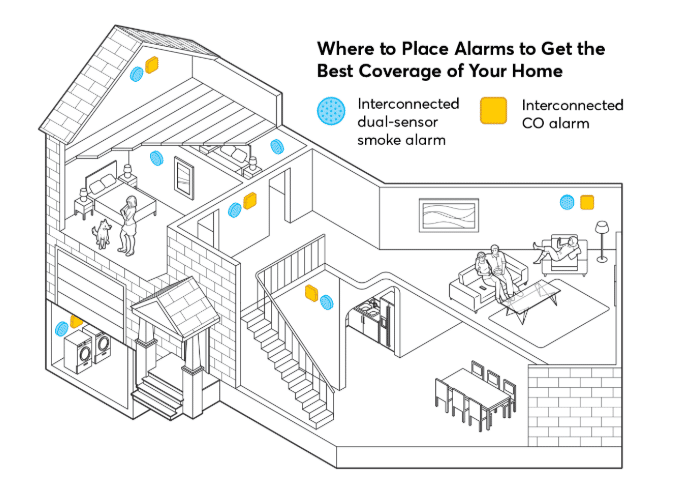
How Do Smoke Detector Work
Smoke detectors come in two main types: ionization detectors and optical detectors. Ionization detectors utilize a small radiation source to detect smoke, while optical detectors use infrared light to identify smoke particles.
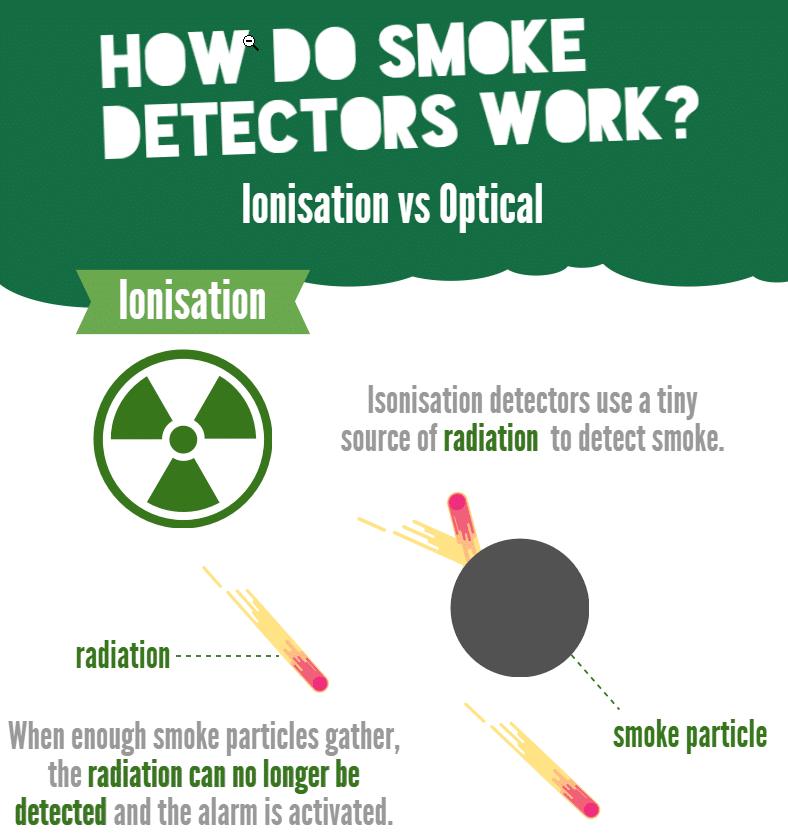
See the whole image here.

